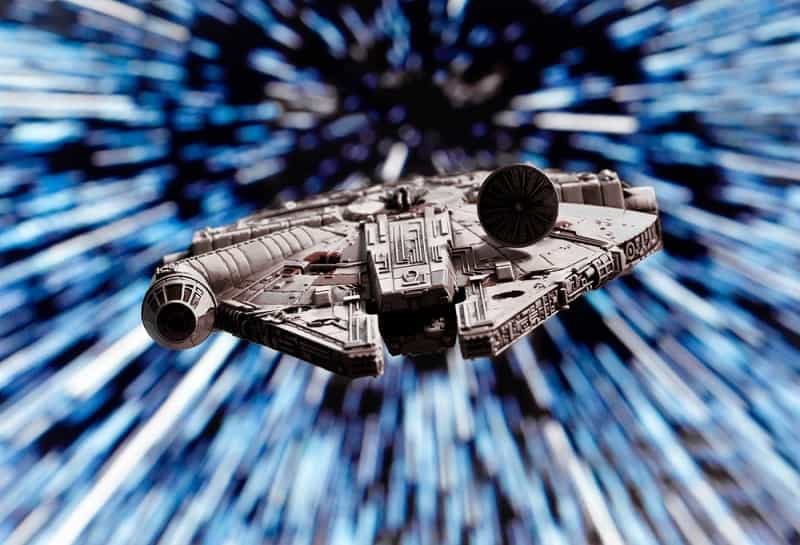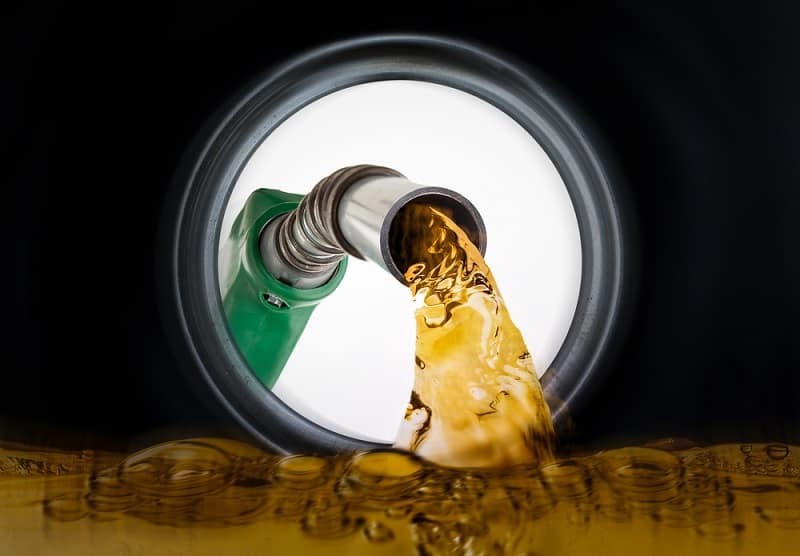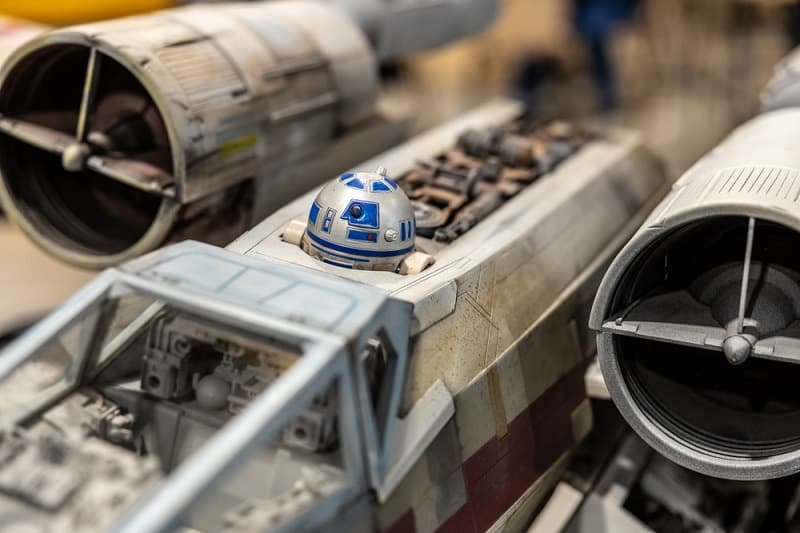The Star Wars universe is full of details. Every aspect of the galaxy has specifics behind it. Take engine and fuel types.
Although engines come in three main types, a couple of the varieties are central to Star Wars ships. Fuel is a behind-the-scenes item but also essential to ships flying across the galaxy.
Read on to find out what you need to know about Star Wars engine and fuel types.
Types of Engines
In Star Wars, engines serve as thrusters that propel ships across space, land, or above a planet. They also can send a vessel across the galaxy.
The three main types of engines are repulsorlifts, sublight engines, and hyperdrives.
Repulsorlifts are the engines that allow speeder bikes and landspeeders to fly. These engines produce thrust by pushing against the gravity of a planet’s surface to allow the land-based craft to move or hover.
Repulsorlift engines are also used in starships, but only for such activities as docking and supporting atmospheric flight.
Bakur Repulsor Corporation is one of the main manufacturers of repulsorlift engines.
Sublight engines are the type that allows ships to fly through an atmosphere and space. Also called sublight thrusters, these engines usually work through a fusion reaction that creates the thrust needed to move through space.
These engines allow a ship to get beyond a planet’s atmosphere and travel great distances in space, but at speeds less than lightspeed.
Hyperdrives are well-known in Star Wars; they are the engines we think of as the screen blurs into dots and streams of light.

Hyperdrives allow ships to fly at or faster than lightspeed and enter hyperspace. They work by using hypermatter particles to thrust a ship into hyperspace but still keep it intact by preserving the ship’s mass and energy.
Sounds tricky, right? To accomplish this amazing Star Wars feat, a hyperdrive engine also needs a component called a hyperdrive motivator.
In The Empire Strikes Back, the Millennium Falcon’s hyperdrive motivator was sabotaged, and this ship initially could not make the jump to lightspeed. But R2-D2 saved the day by repairing it.
Ion Engines and Hyperdrives
Ion engines are the usual type of sublight drives found in Star Wars spaceships. Also called ion thrusters, these engines charge particles through a fusion reaction and power cells to launch a ship forward from behind.
These engines are so common mainly because they require little maintenance. The Imperial Navy made extensive use of ion engines.
For example, many TIE fighters have twin ion engines that provide a distinctive shrieking sound.
Ion engines were thus responsible for most sublight space and atmospheric travel.
Hyperdrives also deserve more description because they represent a crowning technological achievement.
These engines are constructed from a compound of titanium and chromium that protects them in space and hyperspace travel. Hyperdrives allow a ship to travel over 120,000 light-years in days or even hours.
Not all hyperdrives are the same. They are ranked with lower numbers, meaning faster speed. Most military ships during the Imperial era had Class 1 or 2 hyperdrives, reflecting more expensive and better-equipped engines.
One of the most famous hyperdrives belongs to the Millennium Falcon. This ship has a modified Class 0.5 hyperdrive, making it faster than the Imperial ships chasing after it.
Hyperdrives like this one are central to traveling across the Star Wars galaxy.
Fuel Types

In Star Wars, fuel types do not get as much recognition as hyperdrive engines; but without fuel, space flight would halt.
Fuel in Star Wars is part of energy technology, and spaceships generally use fusion reactors that are powered by hypermatter.
Hypermatter fuel is used in combination with hypermatter annihilators, which when combined are capable of producing enormous amounts of energy to propel ships and battlestations through space and make the jump to lightspeed.
As Star Wars fans have indicated, hypermatter is used to fuel large ships such as Star Destroyers that have sizable reactors.
The sublight engines described above rely on fusion reactors, while other ships use chemical, fission, or fusion reactors that are powered by locally sourced fuels.
Coaxium is a common type of fuel that is used with hyperdrives. This fuel is a form of hypermatter and is mined on the planet Kessel.
Coaxium is coated on a ship’s reaction chamber and then, once it is energized, it propels the vessel through hyperspace.
The gas Tibanna is also used in hyperdrives to provide the same effect. It is found in the atmosphere of the planet Bespin.
In addition, Rhydonium is a volatile, explosive fuel used in ships and is obtained from such planets as Abafar and Saracor.
Other fuels include Clouzon-36, a bluish-green gas also used in hyperdrives, and Peragian fuels that are used to power freighter ships. Peragian fuels are known as basic fuels, adequate for transporting goods.
Engines and Fuels
For sublight speeds, most ships use an ion engine, the type of sublight engine found in TIE fighters. These engines work by fusion reactors powered by hypermatter.
Hyperdrives are engines that allow lightspeed travel. The Millennium Falcon is most often associated with this type of engine, as it is responsible for getting away from the Empire.
Beyond hypermatter, fuel types include Coaxium and Tibanna. Fuels keep both sublight and hyperspace engines moving along and add important details to the Star Wars galaxy.

Todd Wahlstrom is a creative and analytical freelance writer and life-long Star Wars fan who has expanded into writing about the Marvel Cinematic Universe. He has written about recent shows such as The Mandalorian and Andor and classic topics like Darth Vader, the Jedi, and Boba Fett. His recent articles include the MCU’s Iron Man, Captain America, and Thor. Todd is the author of a non-fiction book, holds a Ph.D. in history, and enjoys hiking, running, and reading about science.
